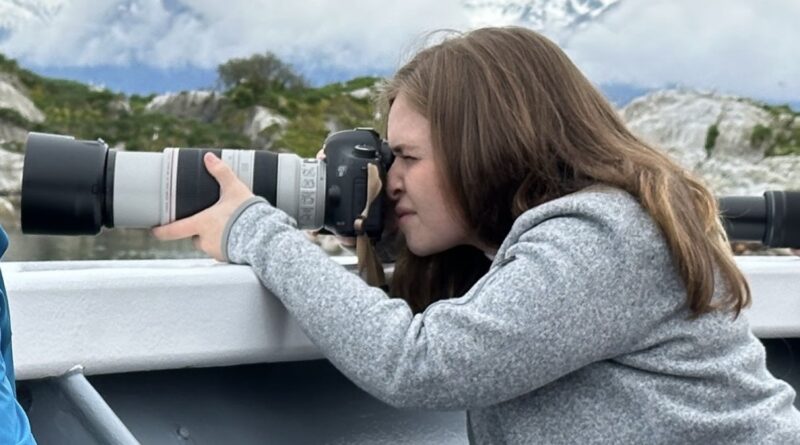Establishing communication and scientific communication
Before completing her undergraduate studies, Sophie Hartley, a student in MIT’s Graduate Program in Science Writing, had an epiphany that was years in the making.
“The courses I took in my last first semester changed my career goals, but they started with my grandfather,” he says when asked what made him write in science. . He was studying human development at the University of Chicago, which Hartley describes as “a blend of psychology and anthropology,” while taking courses in environmental writing and digital science communication.
What if my life was about learning the many complexities of life? he thought.
Hartley’s grandfather introduced him to photography at an early age, which helped him appreciate nature. Every summer, they explored the tidal pools, lush forests and his lush garden. He gave her a camera and encouraged her to take pictures of anything interesting.
“Photography was an opportunity for science journalism,” he says. “It allows you to capture the beauty of the moment and come back to it later.”
Lasting influence through storytelling
Hartley spent time in Wisconsin and Vermont growing up. It was there that he noticed the divide between rural villages and urban areas. He wants to tell stories about communities that aren’t easy to tell, and “connect them to people in the cities who may not understand what’s going on and why.”
Humans have an important role to play in preventing climate change, improving land management practices and policies, and taking better care of our natural resources, according to Hartley. Challenges related to conservation, land management, and agriculture affect us all, which is why he believes effective science writing is so important.
“We are more connected than we believe or understand,” says Hartley. “Climate change creates challenges throughout the agricultural supply chain.”
For her journalism course, Hartley wrote a story about how floods in Vermont led to a shortage of hay, which affected edibles as diverse as goat cheese and beef. He says: “If the hay does not dry, it spoils.” It means that cows and goats do not eat, which means that they cannot produce beef, milk and cheese.
Ultimately, Hartley believes that his work can build compassion for others while teaching people how everything we do affects nature and each other.
He said: “The connective tissue between people continues. “People who live in big cities are not free from the worries of the countryside.”
Building relationships and writing science
During his year studying at the MIT Graduate Program in Science Writing, Hartley is also busy producing reports for major news outlets.
Earlier this year, Hartley wrote a piece on Ars Technica which reviewed ongoing efforts to develop technology aimed at preventing collisions between cars and kangaroos. As Hartley reported, given the unique and unpredictable behavior of kangaroos, the car’s animal detection methods proved ineffective. This has forced Australian residents to come up with other solutions, such as real fences, to keep kangaroos off the roads.
In June, Hartley presented a story for GBH news and Hannah Richter, a fellow student in the science writing program. They report why officials at the new Peabody power plant are backing away from earlier commitments to run the plant on clean fuels.
This story was a collaboration between GBH news and an investigative journalism class in the science writing program. Hartley recalls the wonderful experience of working with Richter. He says: “We were able to rely on each other’s strengths and learn from each other. “This piece took a long time to report and write, and it was good to have a friend and colleague to keep me motivated when we got it back after a while.”
Reporting together can help evenly divide what can sometimes be an overwhelming workload, especially in deep, well-researched pieces like the Peabody story. “When there are so many studies that need to be done, it is good to have someone else who can divide the work,” he continued. “It felt like everything was stronger and better, from the writing to the fact-checking, because we had two eyes on it during the report.”
Hartley’s favorite piece in 2024 focused on beech leaf blight, a deadly disease ravaging North American forests. His story, which was later published in Boston Globe Magazinefollowed a team of four researchers who raced to find out how the disease works. Beech leaf blight kills quickly and widely, leaving room for invasive species to thrive on the forest floor. His interest in land and natural resource management is evident in his work.
Local news organizations are an endangered species as newsrooms across America shed staff and rely more on consolidated news reports from larger organizations. What can be lost, however, are opportunities to tell small stories with big implications. “Small and rural stories of responsibility are being told less,” says Hartley. “I think it’s important for the public to know what’s going on around them, especially if it affects them.”
#Establishing #communication #scientific #communication
